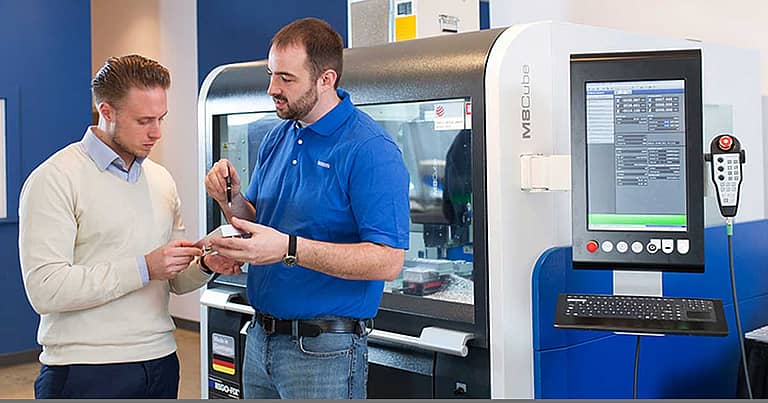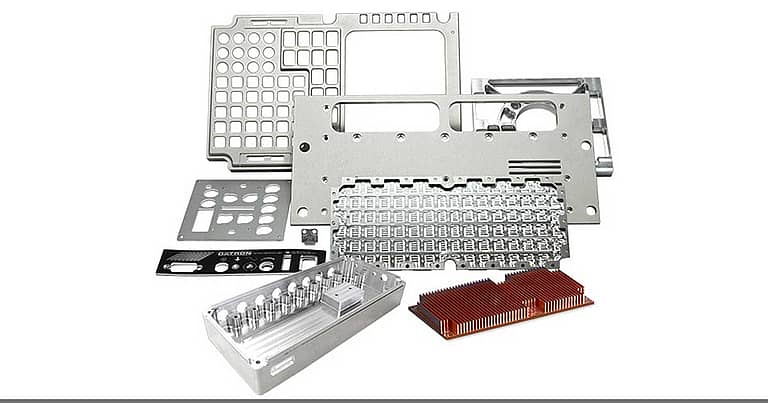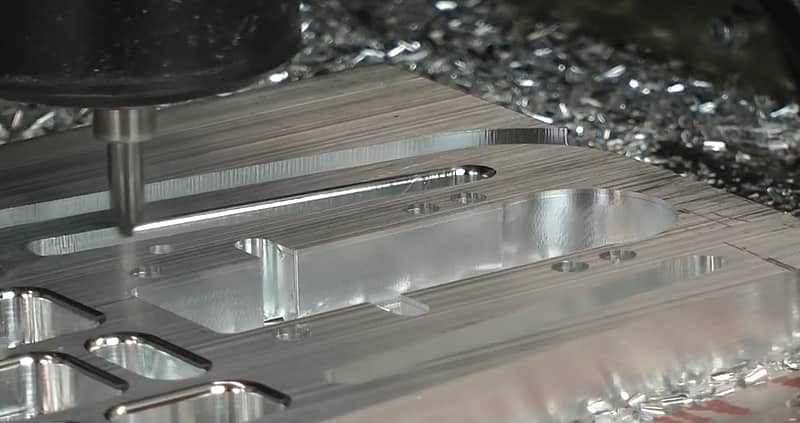
An external radius is a rounded edge otherwise known as a fillet, that can be achieved quickly and easily if you have a flat surface and the proper tools in place! This article will discuss the benefits and disadvantages of these different techniques used, the types of tools needed, and some tips and tricks on how to achieve an external radius for various parts.
Two Ways to Mill an External Radius
There are different ways to mill an external radius by using two types of tools: the external radius mill and the ball mill. Each tool removes the sharp edges from the piece you are working on to create a smooth finish. This finish looks more polished and is helpful when milling handheld parts such as knife handles, bottle openers, and more.
External Radius Tool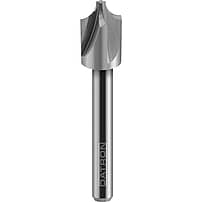
An external radius tool can machine a pristine radius along a workpiece outside edge or an internal contour. When using an external radius tool, the stock is removed from the edge in a 2-D tool path. In terms of efficiency, this tool is the fastest way to achieve an external radius as it completes the rounded edge in one pass rather than going over it several times.
It is important to choose the correct radius of the tool that matches the radius you are looking to achieve on the part. For a clean and smooth finish, make sure that the material you are milling is flat or machined to be flat. When milling your part, leave a small offset to reduce the possibility of gouging, which is when the tool marks the material with a noticeable line.
A benefit of the external radius tool is that less code is needed to create these results. This means that your operations will run faster and more efficiently. Too much code for some CNC machines could cause slower times and issues. Depending on your project needs, this could be a real game changer if you have a consistent radius and a 2-D cut. However, this tool may not always be a great fit for your operation, which is where the ball mill will come in handy.
Ball Mill
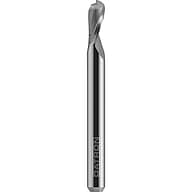 The ball mill is the second tool you can use for external radius milling. The ball mill, otherwise known as full radius end mill, or ball nose mill is a small, round tool that works well for milling in places where the external radius tool is too large to fit, or the external radius size isn’t constant.
The ball mill is the second tool you can use for external radius milling. The ball mill, otherwise known as full radius end mill, or ball nose mill is a small, round tool that works well for milling in places where the external radius tool is too large to fit, or the external radius size isn’t constant.
The benefit of using the ball mill is that you can use one tool for multiple different sized radiuses.
Unlike the external radius tool, the ball mill takes several more paths to complete the radius you are looking to achieve. This means that there will be an increase in production time and potential wear on the tool. The need for several more paths also means that there will be a lot more coding which could slow some CNC machines down.
Finally, if you have many different-sized radii that you need to mill on your part, you must have multiple-sized external radius tools, whereas a ball mill can do many sizes with only one tool. Preparing in advance to ensure you have the correct tool size for each radius milled will set you up for success!
Start Your External Radius Milling Journey Today!
Now you know more about how to mill an external radius. But do you know who can help you get started on your milling journey?
Here at DATRON, we’re the milling experts, and we’re here to help everyone from complete novices to master machinists. Ready to get your milling project started? All you have to do is contact us today!





